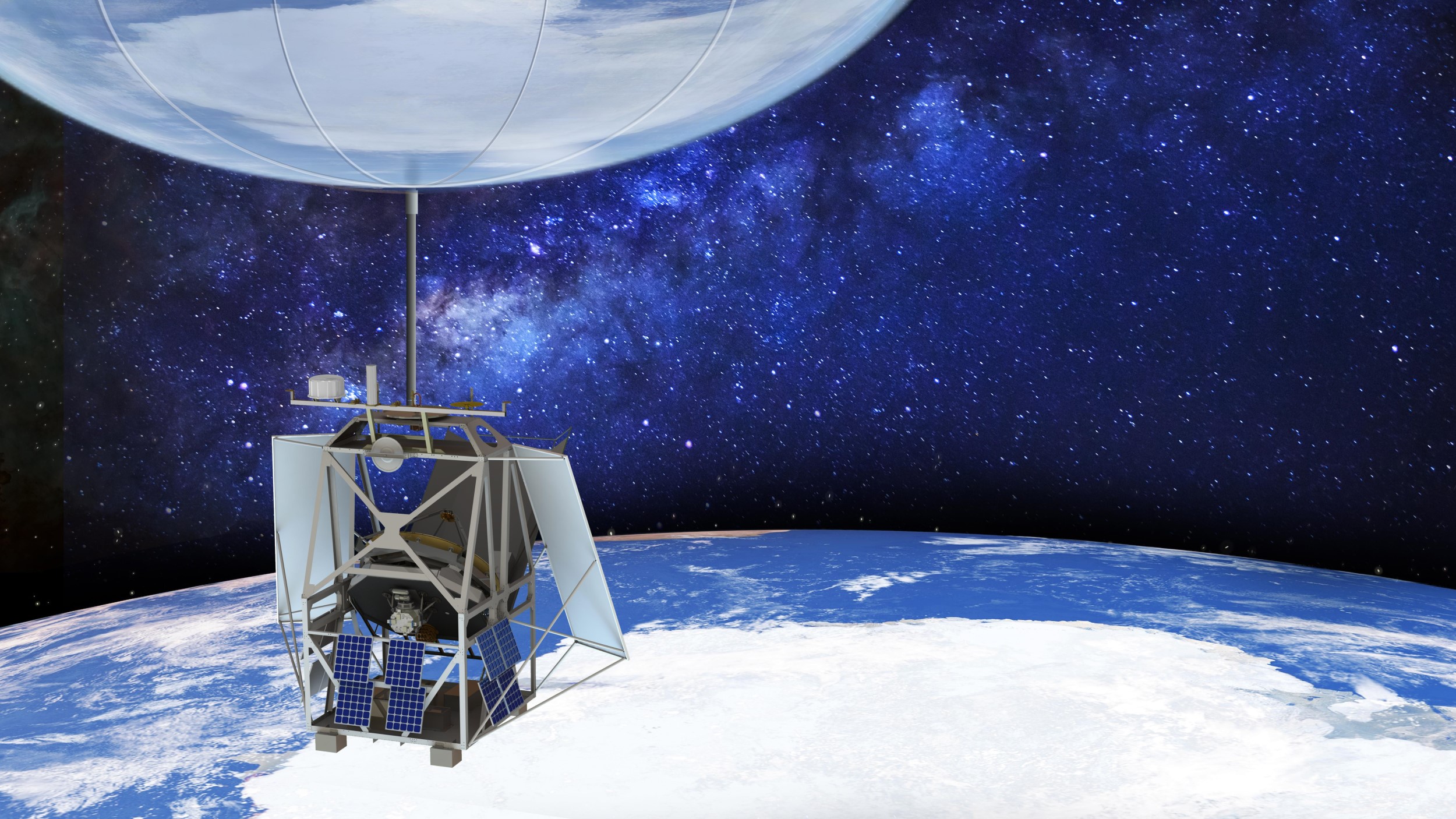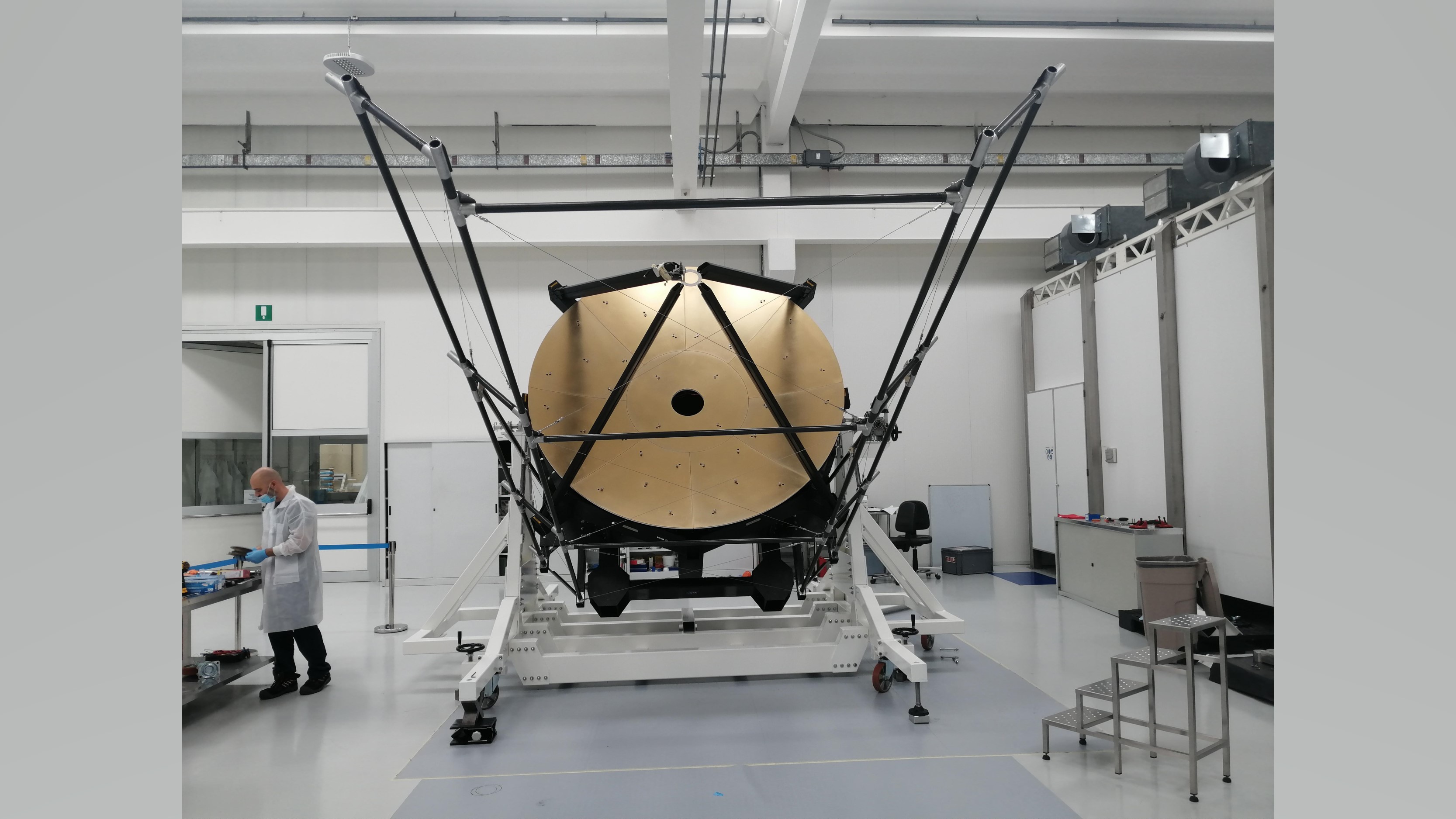A NASA telescope aboard a high-altitude balloon will float over the South Pole to study a 'star-killer'
By flying on a high-altitude balloon, ASTHROS will be able to see things space telescopes cannot.

The James Webb Space Telescope may be getting most of the attention this summer, but next year, keep an eye out for NASA's Astrophysics Stratospheric Telescope for High Spectral Resolution Observations at Submillimeter-wavelengths (ASTHROS) instrument.
ASTHROS is not a space telescope or a ground-based telescope but something in between, hovering in the stratosphere. NASA intends to fly the instrument to an altitude of 130,000 feet (40,000 meters) via a balloon larger than a football field, deploying it over Antarctica for a period of up to four weeks. The benefit of flying a telescope at that altitude is that it dramatically reduces interference by Earth's atmosphere — an aspect that's crucial to ASTHROS' mission.
The telescope will study an unusual phenomenon called stellar feedback, a process by which living stars and dying ones stir up the clouds of gas and dust around them. Normally, this creates an environment that promotes the birth of stars. But in some extreme cases, too much stellar feedback can actually prevent new stars from being born. ASTHROS will scan star-forming regions in the Milky Way and create 3D maps cataloging the motion of the gas inside these regions, NASA officials said in a statement.
Related: This 3D map of the Milky Way is the best view yet of our galaxy's warped, twisted shape
To do so, the instrument needs to observe light in far-infrared wavelengths. Ground-based telescopes cannot see this light because it's blocked by the densest part of the atmosphere, the troposphere. But at an altitude nearly 25 miles (40 kilometers), ASTHROS will be in the less-dense stratosphere, thereby allowing it to take crisp images in the far-infrared range.
Engineers are facing a unique set of design challenges for this instrument. For starters, the entire telescope must be extremely lightweight to be carried by the balloon. But it also needs to be rigid enough so that the shape of the nine-piece, 8.2-foot (2.5 m) mirror does not warp or shift more than 0.0001 inch (2.5 micrometers), smaller than the width of a human hair. Should the mirrors become misaligned even to this slight degree, they would not be able to produce clear images.
NASA tapped Italian optics company Media Lario to design ASTHROS; the company had previously developed lightweight telescope mirrors used in the Atacama Large Millimeter/submillimeter Array (ALMA) in Chile.
Breaking space news, the latest updates on rocket launches, skywatching events and more!
"I think this is probably the most complex telescope ever built for a high-altitude balloon mission," Jose Siles, ASTHROS project manager at NASA's Jet Propulsion Laboratory, which is managing the mission, said in the statement. "We had specifications similar to a space telescope but on a tighter budget, schedule, and mass. We had to combine techniques from ground-based telescopes that observe in similar wavelengths with advanced manufacturing techniques used for professional racing sailboats. It's pretty unique."
ASTHROS is currently under construction and will launch from NASA's Long Duration Balloon Facility in Antarctica no earlier than December 2023.
Follow Stefanie Waldek on Twitter @StefanieWaldek. Follow us on Twitter @Spacedotcom and on Facebook.

Space.com contributing writer Stefanie Waldek is a self-taught space nerd and aviation geek who is passionate about all things spaceflight and astronomy. With a background in travel and design journalism, as well as a Bachelor of Arts degree from New York University, she specializes in the budding space tourism industry and Earth-based astrotourism. In her free time, you can find her watching rocket launches or looking up at the stars, wondering what is out there. Learn more about her work at www.stefaniewaldek.com.

